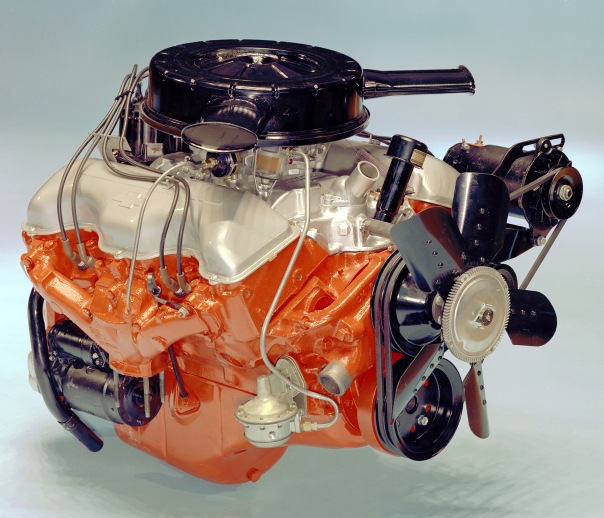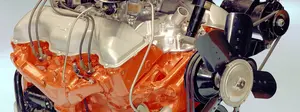4/09: It’s 409 day—The engine that inspired a song, and a legion of drag racers

It began life as the Turbo-Thrust 348-cid engine that debuted for the ’58 model year. It was referred to as the big-block V-8 when marketed alongside the 265-cid and 283-cid small-blocks or the inline-six 265-cid engines.
Born in an age when Zora Arkus Duntov was in charge of hot-rodding every vehicle and engine combination in the Chevrolet passenger-car lineup, the displacement was increased to 409 cubic inches for ’61. The new engine received significant camshaft testing and was fit with larger valves to improve breathing. The 409 featured a 4.31-inch bore and 3.5-inch stroke. The intake valves were 2.06 inches and fit next to 1.72-inch exhaust valves. Both actuated by a mechanical camshaft that fed air and fuel to forged pistons that created more than 11:1 compression. With its single four-barrel carb, the engine was rated at 360 hp.
Motor Trend tested a ’61 409 Impala SS on the drag strip for its Sept. 1961 issue. With the factory-installed 3.36 axle gears, the car ran a 15.31-second quarter-mile at 94.24 mph. When fit with “dealer-installed” 4.56 axle gears, Motor Trend’s test car ran the quarter-mile in 14.02 seconds at 98.14 mph.
Watch! Hayden Proffitt's 409 Chevy win Stock eliminator at the 1962 NHRA U.S. Nationals
In 1962 there were two versions of the 409: the four-barrel version rated for 380 hp, and a dual-quad version rated at 409 hp. The dual-four barrel 409 received larger 2.19-inch intake valves. Both engines were badged as Turbo-Fire powerplants. These cars were famously campaigned by Dave Strickler (for Bill Jenkins), Don Nicholson, and Hayden Proffitt.
In 1963 there were three versions of the 409: a hydraulic-camshaft four-barrel version that generated 340 hp with 10:1 compression, a mechanical-camshaft four-barrel version that generated 400 hp with 11:1 compression, and a mechanical-camshaft, dual-four-barrel version that generated 425 hp with 11:1 compression.
The 409 engine's history deviates on the drag strip in 1963. A stroked 427-cid version of the W engine was developed for the drag strip in conjunction with the 427-cid Mystery Motor that was developed for NASCAR. In Z-11 trim ( a $1,237 option) these 409 (really 427-cid) cars showed up at the 1963 Winternationals with aluminum front ends and 430 horsepower ratings.


